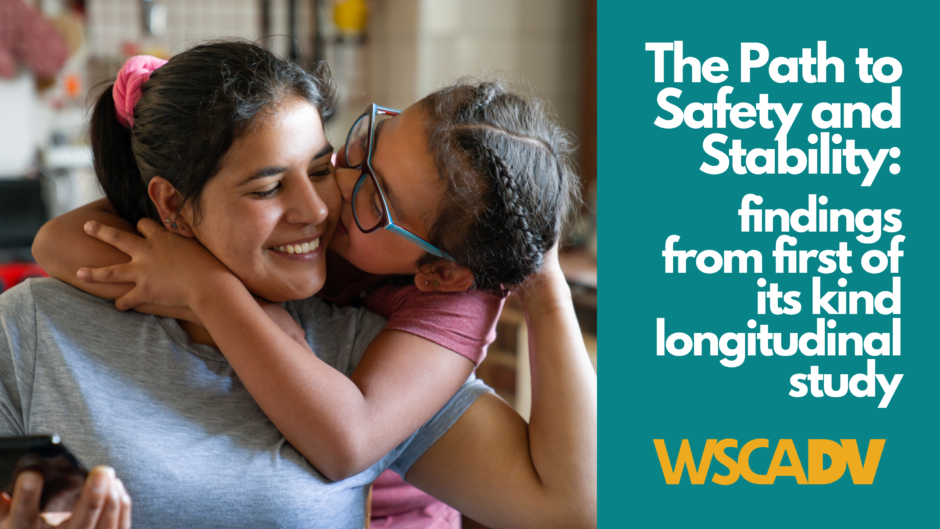
Last month’s findings from our long-term evaluation research – conducted in partnership with Michigan State University – indicates that the Domestic Violence Housing First (DVHF) model is more effective than services as usual in helping survivors achieve housing stability, safety, and improved mental health over two years. Survivors participating in DVHF also reported higher prosocial behaviors from their children compared to parents who received traditional services. We are thrilled to share these incredible results, the details of the research, and tools for others to implement the model across the country as we all strive to effectively meet the needs of survivors and their children on their path to thriving.
We have long known the devastating reality that domestic violence is a leading cause of homelessness, but we have not had any research on the effectiveness of strategies designed to address this. WSCADV has been working to meet the needs of survivors and their children while addressing this gap in the field, beginning with the launch of a five-year pilot project in 2010 and concluding this year with our DVHF demonstration evaluation that interviewed survivors across 24 months to learn the long-term impacts of this approach. Domestic Violence Housing First focuses on getting survivors and their children into stable housing as quickly as possible, and then providing the necessary support as they rebuild their lives. Key programmatic components include: survivor-driven, trauma-informed, mobile advocacy; community engagement; and flexible financial assistance.
Five demonstration project sites, two urban and three rural, participated in this longitudinal study from the years 2016-2021. Survivors seeking services from these agencies were invited to participate in an initial interview and then follow-up interviews 6, 12, 18, and 24 months after seeking services. Researchers collected detailed information about their backgrounds, economic status, and housing and safety obstacles to ensure we were evaluating how the approach worked with a diverse group of survivors with a wide range of backgrounds, experiences, and needs. Interviews included questions about abuse, financial instability, housing instability, social support, mental health, substance abuse, well-being, service needs, and services received. The initial interviews also captured basic demographic information as well as historical data regarding abuse and homelessness. The research focused on two pillars of the DVHF model, flexible funding and mobile housing-related advocacy.
Eleven statistically significant group differences were found, all favoring those who had participated in DVHF compared to those who received services as usual. These included improvements in: housing stability; physical, emotional, and economic abuse; children’s prosocial behaviors; and depression and anxiety. Positive change in these domains happened quickly, within the first 6 months after seeking services, and persisted across 12, 18, and 24 months. Ten of the outcomes studied showed no statistically significant difference between those who participated in the DVHF model and those who received traditional services. These included: financial stability; overall quality of life; sexual abuse; substance misuse; and children’s school attendance or performance. The DVHF model worked similarly across people from various race and ethnicity groups, as well as both urban and rural geographic service areas.
The long-term benefits of providing flexible financial assistance and trauma-informed mobile advocacy to survivors are now clear. This research has shown Domestic Violence Housing First to be an approach worth investing in and WSCADV is committed to sharing what we’ve learned to grow the positive impact across our state and nationally. To learn more and share with others please explore:
- Program Overview – learn about the pillars of the DVHF approach and see examples of the programming in action.
- The Domestic Violence Housing First Toolkit – a collection of materials and resources for domestic violence programs to implement the DVHF approach.
- Demonstration Evaluation – explore the details of the longitudinal research including the executive summary of our findings.